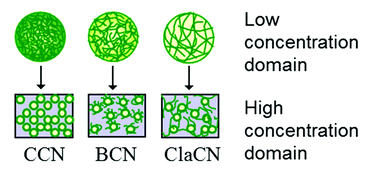Cellulosic nanorods of various aspect ratios for oil in water Pickering emulsions†
Abstract
Cellulosic colloidal

* Corresponding authors
a
INRA, UR1268 Biopolymeres Interactions Assemblages, 44316 Nantes, France
E-mail:
isabelle.capron@nantes.inra.fr
Fax: +33 240675043
Tel: +33 240675095
b Université de Nantes-CNRS, UMR6502 Institut des Matériaux Jean Rouxel, 44322 Nantes, France
Cellulosic colloidal

 Please wait while we load your content...
Something went wrong. Try again?
Please wait while we load your content...
Something went wrong. Try again?
I. Kalashnikova, H. Bizot, P. Bertoncini, B. Cathala and I. Capron, Soft Matter, 2013, 9, 952 DOI: 10.1039/C2SM26472B
To request permission to reproduce material from this article, please go to the Copyright Clearance Center request page.
If you are an author contributing to an RSC publication, you do not need to request permission provided correct acknowledgement is given.
If you are the author of this article, you do not need to request permission to reproduce figures and diagrams provided correct acknowledgement is given. If you want to reproduce the whole article in a third-party publication (excluding your thesis/dissertation for which permission is not required) please go to the Copyright Clearance Center request page.
Read more about how to correctly acknowledge RSC content.
 Fetching data from CrossRef.
Fetching data from CrossRef.
This may take some time to load.
Loading related content
